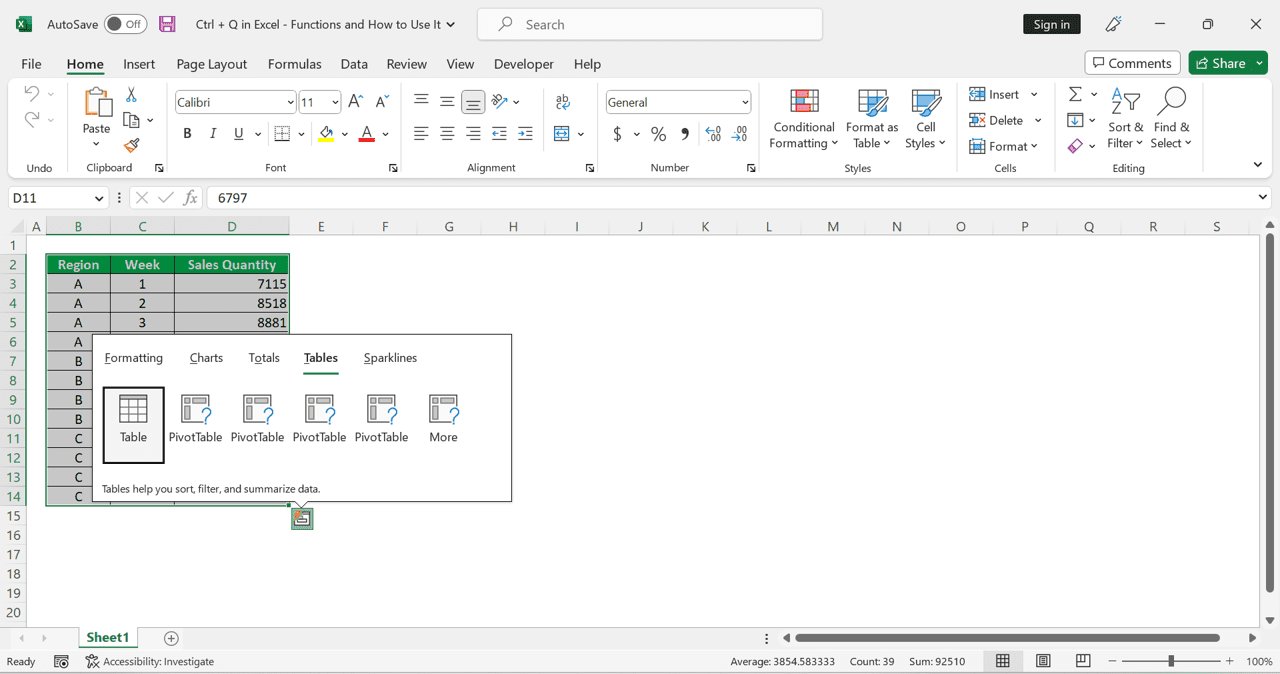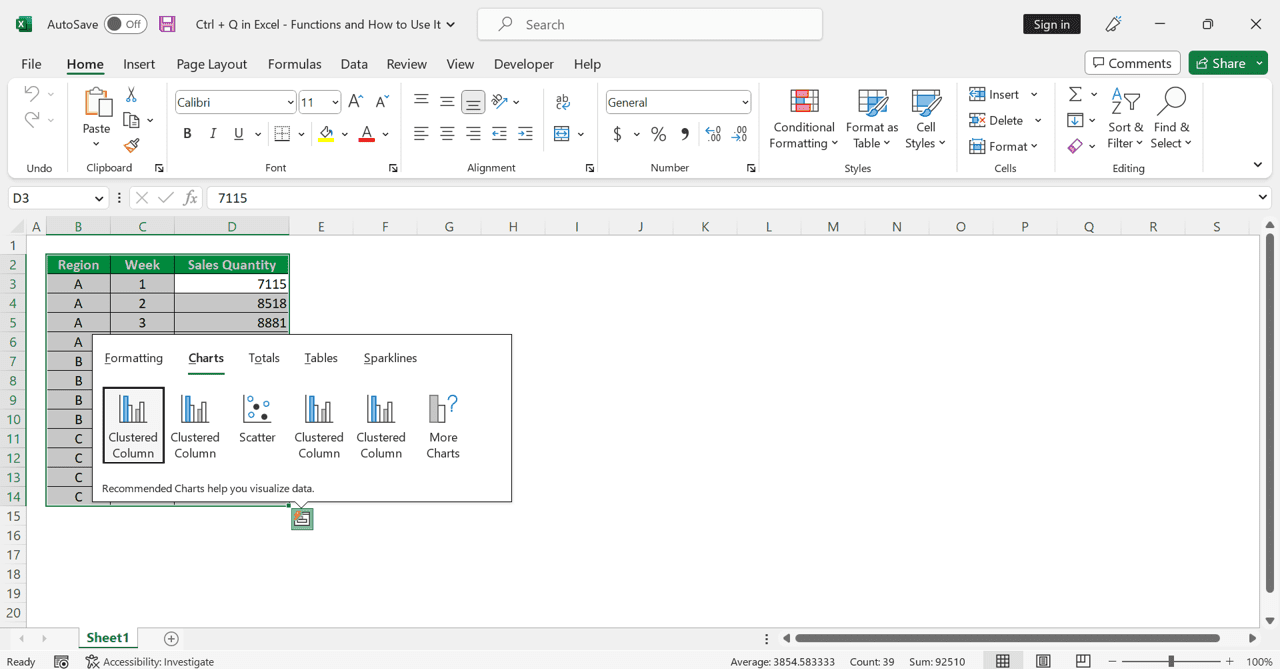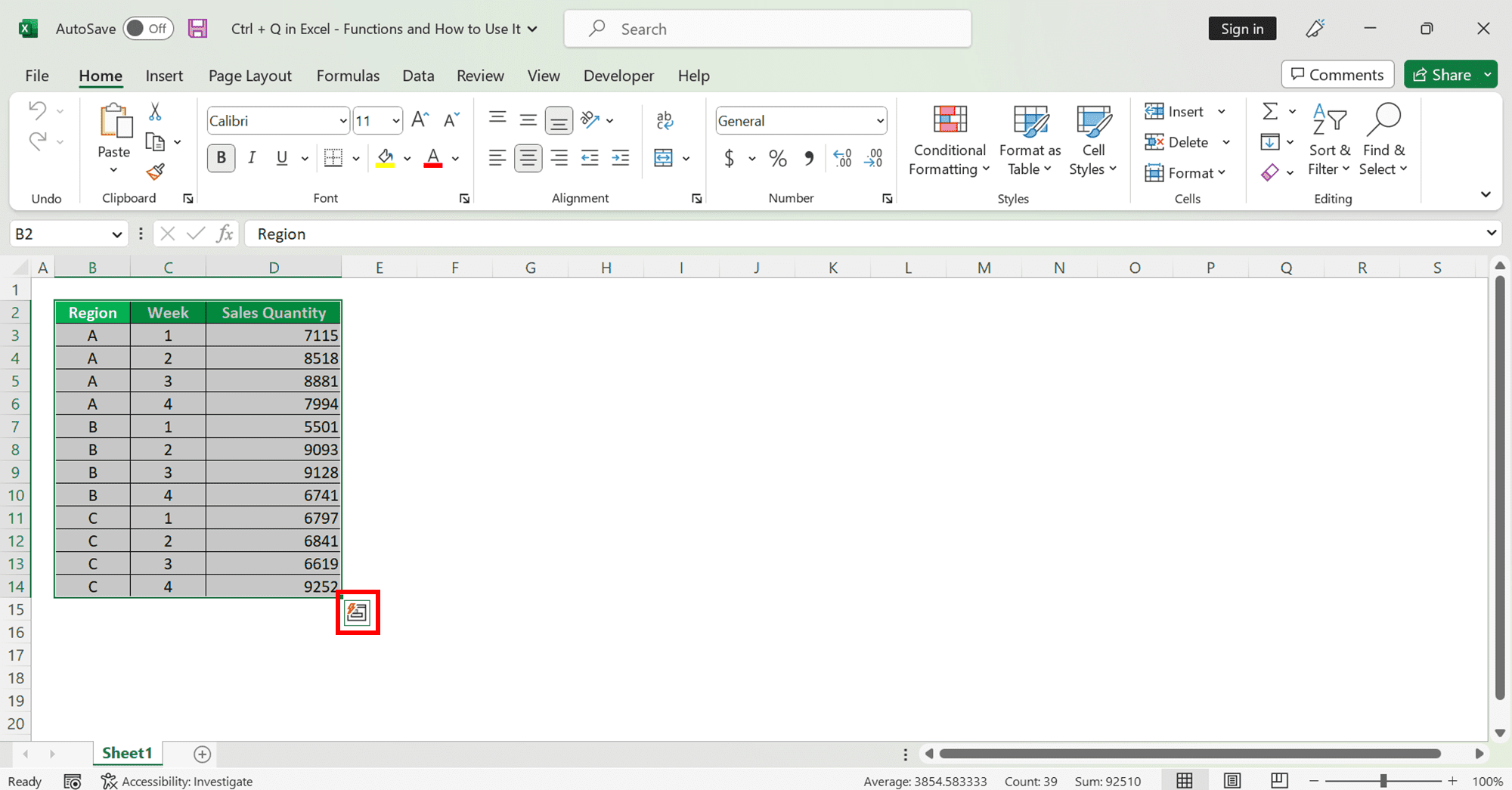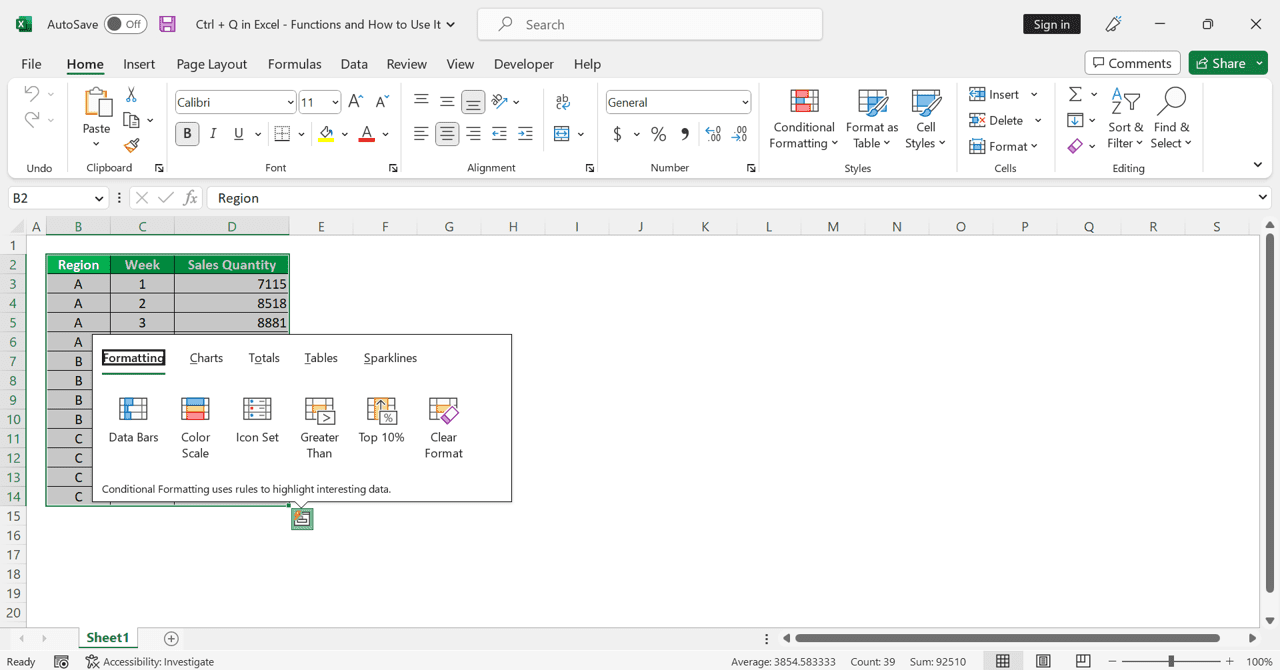Ctrl + Q in Excel: Functions and How to Use It
Home >> Excel Tutorials from Compute Expert >> Excel Tips and Trick >> Ctrl + Q in Excel: Functions and How to Use It
From this tutorial, you will know what is the function of and how to use Ctrl + Q in Excel.
There are many shortcuts we can use in Excel to make us work faster. One of those shortcuts is Ctrl + Q. If we can use this shortcut well, we might be able to process and visualize our data much faster.
Want to know more about this Ctrl + Q shortcut in Excel and what it can do for us? Let’s discuss it straight away.
Disclaimer: This post may contain affiliate links from which we earn commission from qualifying purchases/actions at no additional cost for you. Learn more
Want to work faster and easier in Excel? Install and use Excel add-ins! Read this article to know the best Excel add-ins to use according to us!
Table of Contents:
Functions of Ctrl + Q in Excel
We can use Ctrl + Q to utilize the Quick Analysis tool on our data table in Excel. This Quick Analysis tool can help us to apply the right conditional formatting, charts, calculations, tables, and sparklines on the data we have.How to Use Ctrl + Q in Excel
Using the Ctrl + Q shortcut in Excel is quite easy. First, place your cell cursor on one of the cells in the data table that you want to apply the Quick Analysis tool on.
Then, just press Ctrl and Q buttons on your keyboard simultaneously. Excel should immediately display its Quick Analysis tool on your data table.

There are five parts of data processing and visualization in the tool that Excel fills with its suggestions to apply quickly on your data. They are:
-
Formatting

Apply suggested conditional formatting settings on your data table -
Charts

Create suggested charts based on the data type in your data table -
Totals

Write suggested calculation formulas automatically for the data in your data table -
Tables

Apply suggested Excel tables on your data table -
Sparklines

Create suggested sparklines based on the data in your data table
Using this Quick Analysis tool from the Ctrl + Q shortcut should help you quickly process and visualize the data table you have to fulfill your data analysis needs.
Ctrl + Q Alternative in Excel: The “Quick Analysis” Button
Besides using Ctrl + Q, you can also access the Quick Analysis tool through the “Quick Analysis” button.To make this button shows up, just select the cell range of the data you want to use the Quick Analysis tool on by dragging your pointer across it. After you do that, the “Quick Analysis” button should show up on the bottom right of your highlighted cell range when your pointer on in that cell range.

Clicking the button should make the Quick Analysis tool shows up.

From there, you can use the tool to help you process and visualize the data in your selected cell range.
Exercise
After you have learned the function of and how to use Ctrl + Q in Excel, you should try to practice the shortcut to understand what you have learned better.Open an Excel file and create some dummy data tables if it hasn’t had one yet. Then, use Ctrl + Q and try to do some quick analysis on the data tables.
How is it? Can you implement the shortcut correctly?
Additional Note
- The Ctrl + Q shortcut can be used since Excel 2013 when the Quick Analysis tool is introduced. Previously, this shortcut isn’t assigned to anything
- The Quick Analysis tool doesn’t seem to be available in Excel for Mac. Thus, the Ctrl + Q shortcut doesn’t do anything and doesn’t have any equivalent shortcut on Mac
- If you use Ctrl + Q when selecting cells without any data region, it won’t do anything
Excel articles/tutorials you might want to read too:














